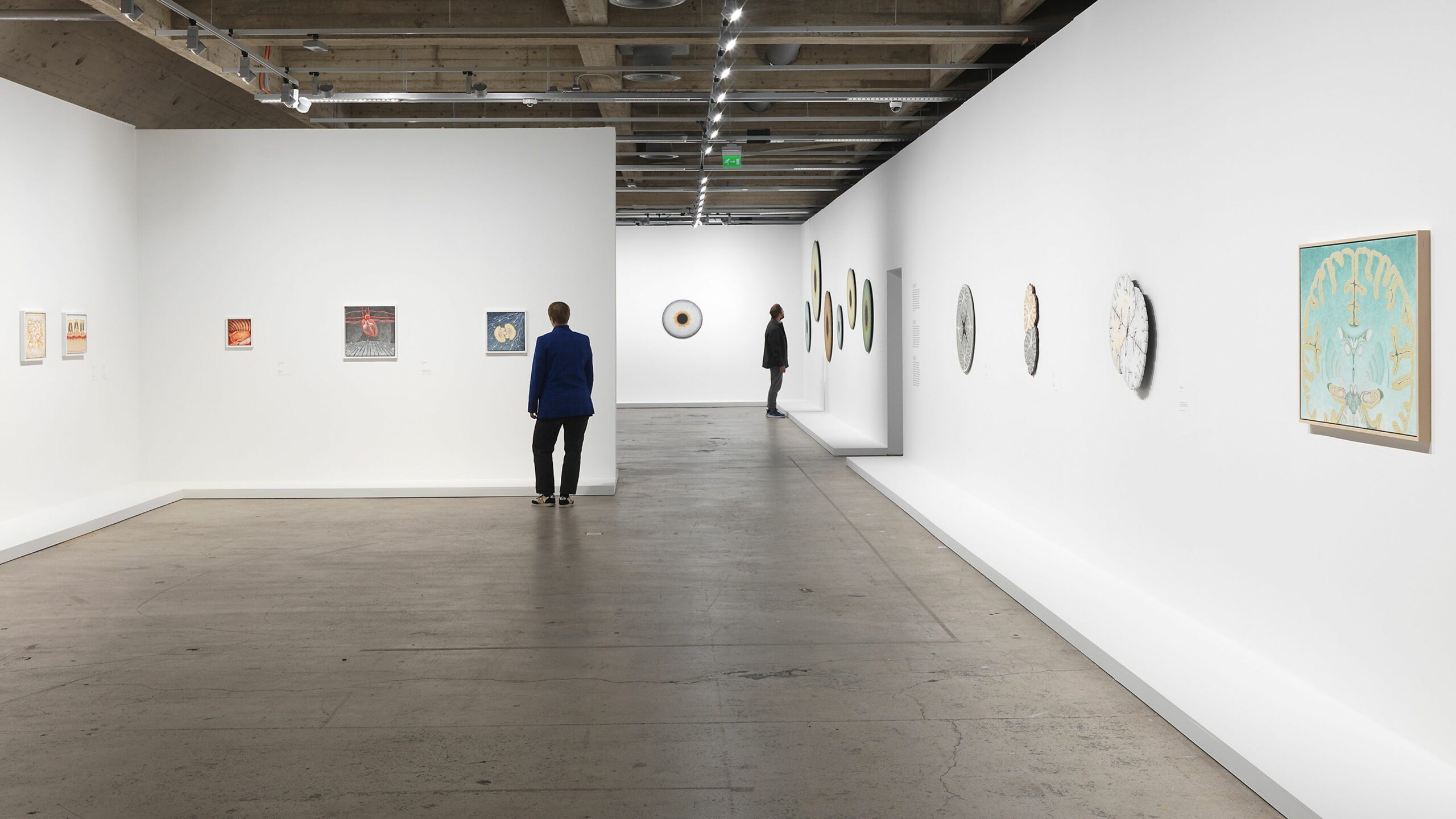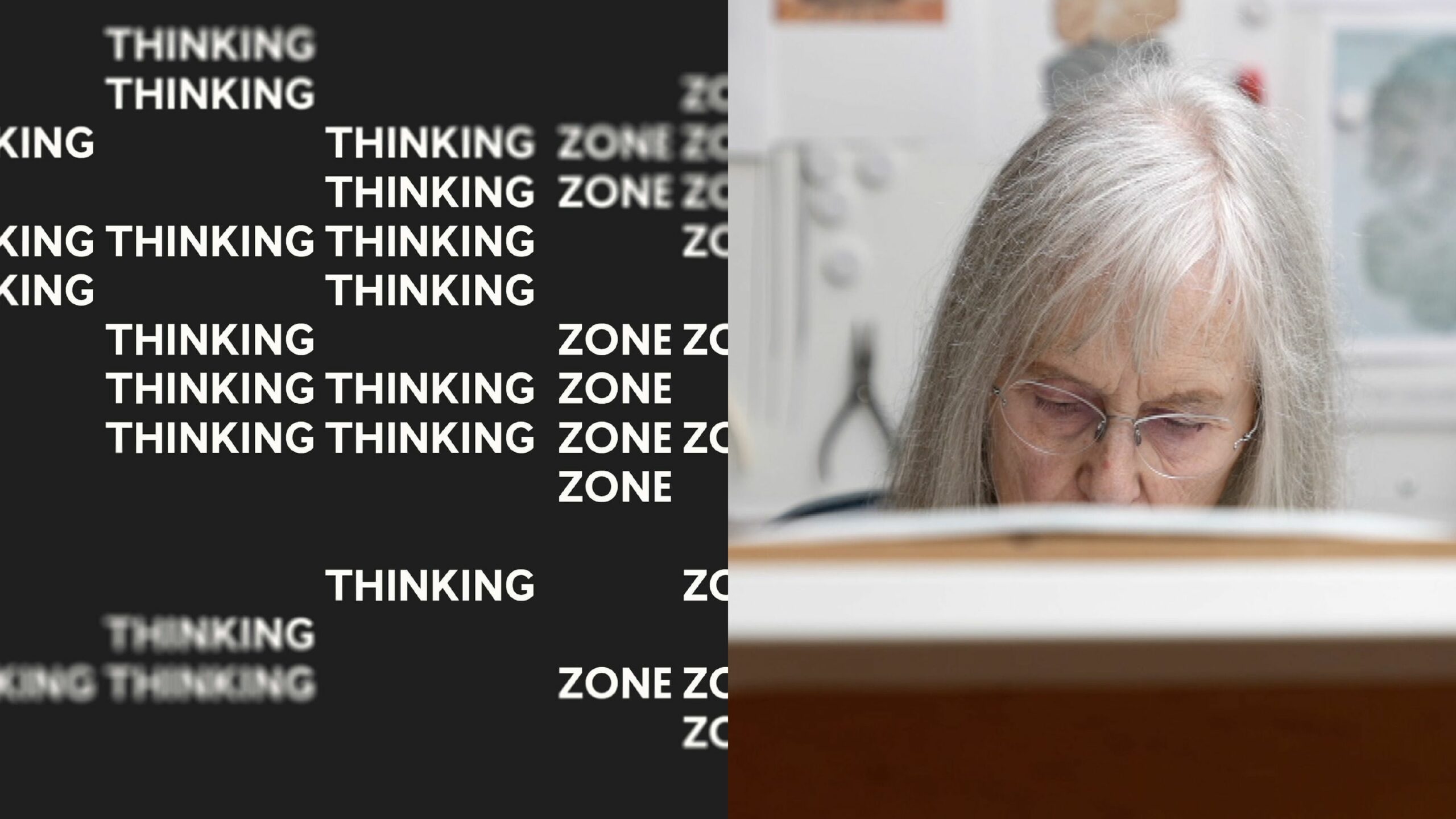Espoo Museum of Modern Art
Mobile guide to the Ulla Wiggen: Passage exhibition

The exhibition showcases paintings by the Swedish artist Ulla Wiggen (b. 1942) throughout her career spanning over six decades. Wiggen’s career is marked by distinct yet surprising transitions from one subject to another. Her works also feature transitions and passages, where the viewer’s gaze focuses inward on the depicted subject and then back outward again. The exhibition’s name also refers to the painting, Passage, on display.
In the early years of her career in the 1960s, Wiggen took a particular interest in electronics. She then began painting portraits, followed by precise depictions of human internal organs. In the 2010s, Wiggen achieved international breakthrough and wider recognition with her Iris paintings.
Ulla Wiggen approaches her subjects with calm realism, often using a subdued colour palette. Her works are precise and deliberately detached depictions of their subjects. However, their themes and details provoke contemplation about human existence, the body, and the mind.
The exhibition is organised in collaboration with the Fridericianum in Kassel, Germany and Västerås Konstmuseum in Sweden. The Fridericianum hosted Ulla Wiggen’s exhibition Outside / Inside in spring 2024, and in 2025 the exhibition now hosted at EMMA will travel to its next destination, Västerås.
Read more about the exhibition's themes
Anatomy
During the height of the 1960s computer culture and technological hype, Ulla Wiggen became known for her paintings depicting circuit boards and electronic components. She was one of the pioneering artists exploring computers and technological culture in her art. She used parts of devices and cut-outs from computer magazines as her source materials, arranging them into her own compositions. The revolution of digital technology also impacted the development of music. In Sweden, the Fylkingen association, spearheaded by composer and musician Knut Wiggen, stood for the electronic music trend. Through Fylkingen and her future husband Knut, Ulla Wiggen was introduced to new topics and the art world at large.
Outside
In the late 1960s, Ulla Wiggen shifted from depicting the insides of electronic devices to their exteriors. The sky took over as the background of her works, and soon her subjects changed to people. A painting of a sphinx, based on a small photograph, served as a catalyst for creating portraits. In her first portrait, Wiggen became her own subject, with her gaze directed downward. She painted portraits of her close ones and on commission for thirty years using watercolours and acrylics. Inspired by artist Öyvind Fahlström, Wiggen learned to use a camera and image projection as aids in her early painting career. Fahlström taught that anything that facilitates one’s work is allowed.
Inside
Wiggen’s interest in depicting the human body and its insides in her paintings intensified in the 1970s. However, this theme remained unrealised as Wiggen began another career as a psychotherapist, which she continued until the 2020s. Alongside her therapy work, she painted now and then. In the 2010s, she again started painting regularly, and the idea of depicting internal organs resurfaced. Wiggen explored the subject by examining animal carcasses and medical literature. The paintings are not realistic depictions, however. The organs are detached from their actual locations or imaginatively combined, much like the electronic components in her early works.
Passage
In the 2010s, Ulla Wiggen’s expression gradually took on a more simplified turn. Images of internal organs detached from their backgrounds and eventually even from their square canvases. Since 2016, Wiggen’s subject matter has been the brain and eyes, with a focus in recent years only on pupils and irises. The technically demanding Iris works are numbered, and the latest paintings also bear the name of the iris’s owner. Throughout her career, Wiggen has explored people and machines from either the inside or the outside. In the Iris works, she examines the transition between external and internal worlds.
Watch Ulla Wiggen's video portrait on EMMA Zone

→ www.emmazone.fi ←
EMMA Zone is the digital home of EMMA. The site offers a variety content about art, design and the museum’s work under four categories: Thinking Zone, Behind the Scenes at EMMA, Bubbling Under and Children’s Art Questions.
EMMA Zone – always open for art!